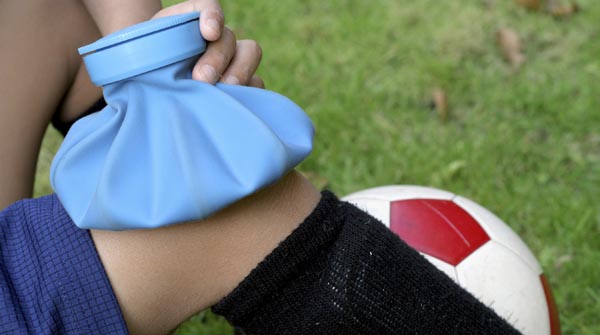
The knee is the largest joint in the body and represents two specific articulations: the tibiofemoral joint and the patellofemoral joint. The tibiofemoral joint is what we think of as the hinge joint when we extend and flex the knee. The patellofemoral joint is the joint between the patella and the femur as the patella (knee cap) slides up and down with flexion and extension. We will learn about a range of injuries that can happen to the structures in and about these two joints. Remember, as a species that walks upright we put stress on the knees just by walking around every day. This stress is compounded by running, jumping, landing, cutting, and all the other movements that come with sport and exercise. Students who have a good understanding of the basic anatomy (bones, ligaments, cartilage, and other soft tissues), mechanism of injury, and the common injuries described in the chapter will have a good foundation for future study of knee injury.
Required Reading:
Chapter 6 in the AT Primer textbook. Read intro paragraphs, knee anatomy pages 99-101 and Injuries to the knee pages 108 - 114. Pay close attention to the shaded boxes and injury highlights throughout the chapter
Narrated Presentations:
Listen to this narrated presentation on knee injuries.
Use this presentation as a supplement to your reading.
Web Activities:
Visit this website to review basic knee anatomy and knee injuries.
View this You Tube video to learn about ACL reconstruction
Review this paper to learn about ACL Injury Prevention (only 5 pages!)
Keep in mind these resources have all lower extremity information associated.
Check out the CT Anatomy section of the textbook website to learn the bones of the knee.

Upon completion of this module the learner will be able to:
Understand basic anatomy of the knee as it relates to injury
Recognize common injuries and conditions of the knee and the patellofemoral joint
Recognize common mechanisms of injury
Appreciate the role of the athletic trainer in assessment and referral

Please refer to your class syllabus for information on the required written assignments and their due dates. You will also find this information at the bottom of the syllabus page by using the tab located above.

© 2013 Board of Regents of the University of Wisconsin System •
Please YOUR INSTUCTOR with questions, ALl rights reserved.